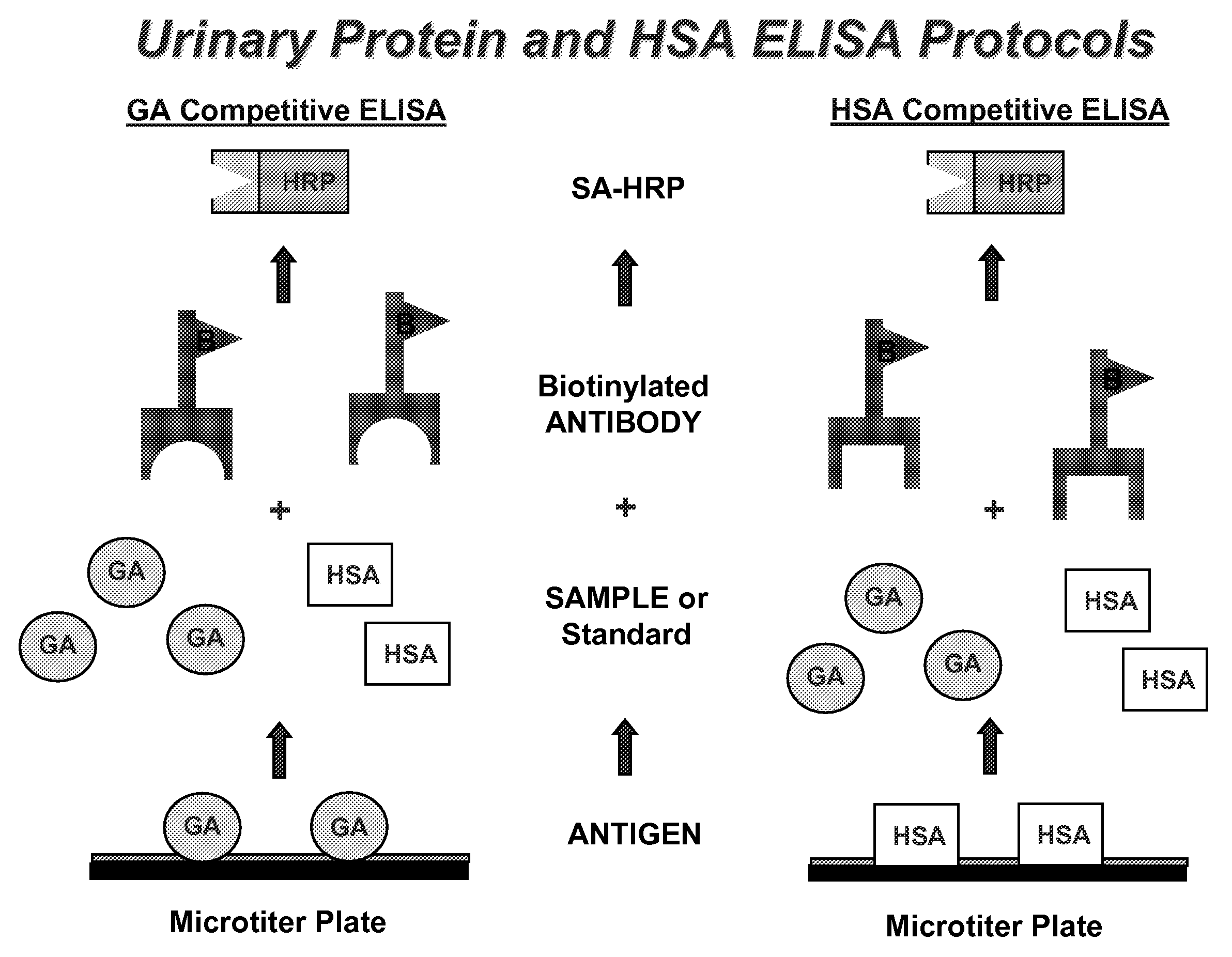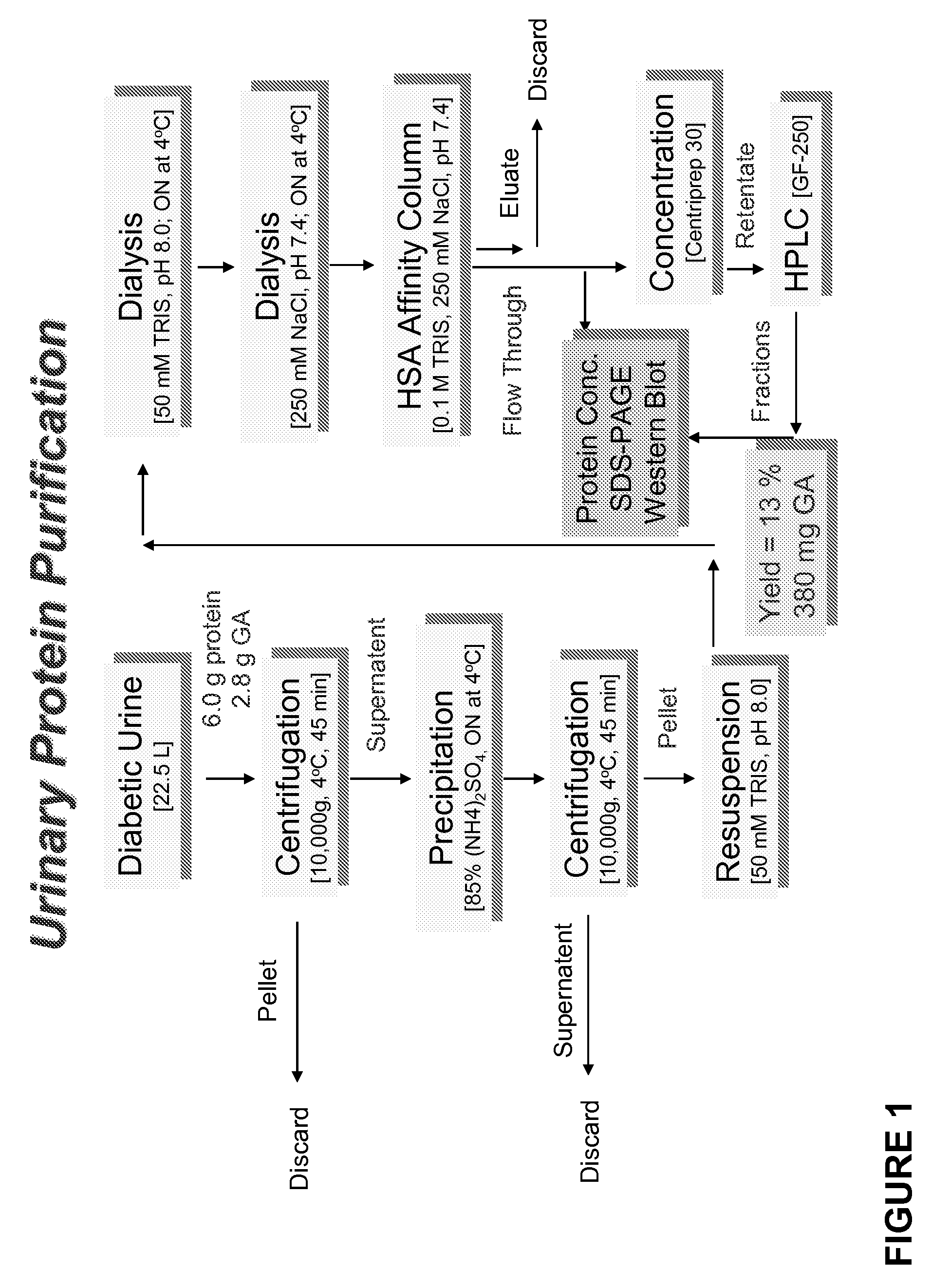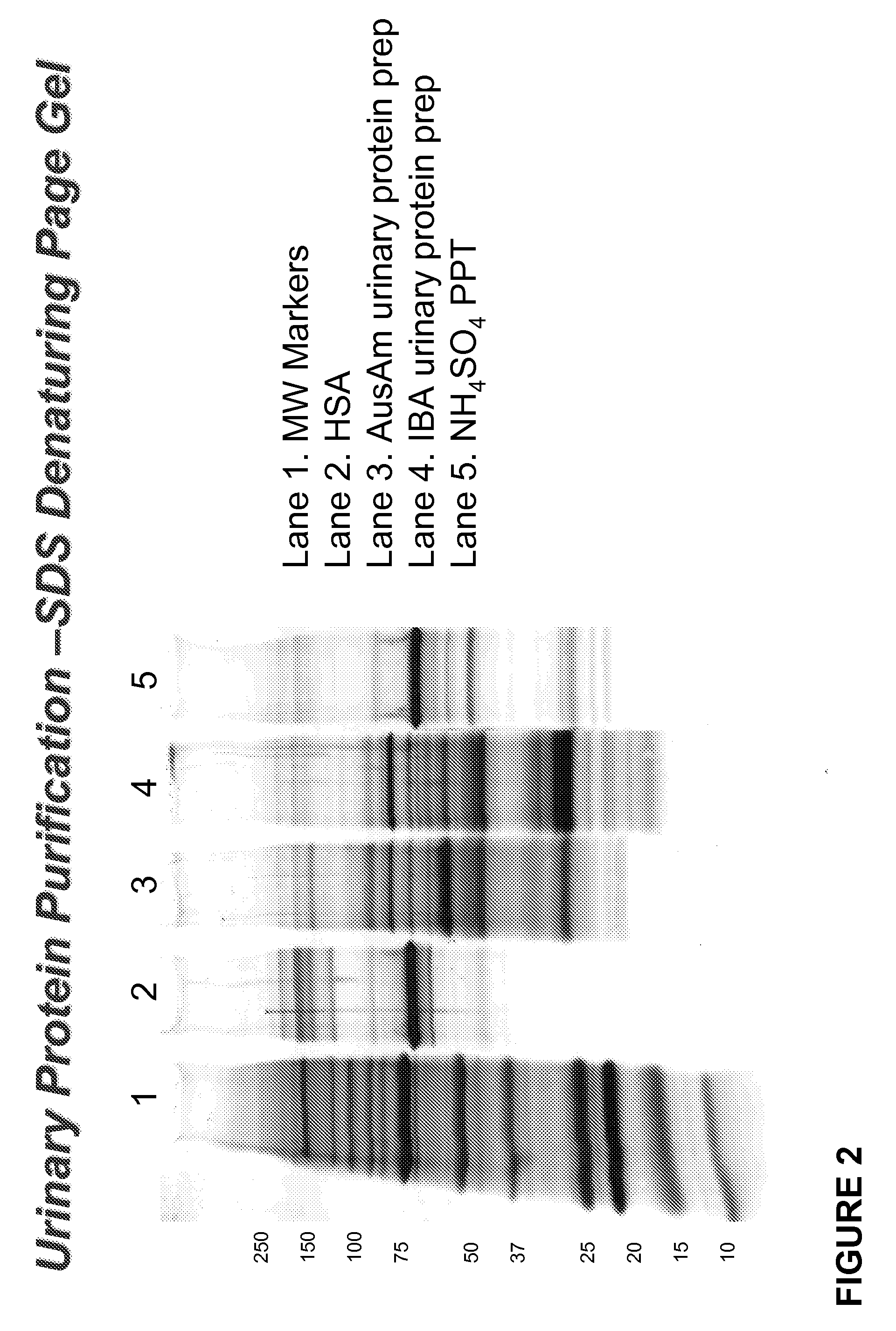Methods for Early Diagnosis of Kidney Disease
a technology for kidney disease and early diagnosis, applied in the field of kidney disease diagnostic reagents and methods, can solve the problems of high economic cost of kidney disease, costing more than $27 million annually, and the risk of kidney failure of a person with diabetes, so as to improve the sensitivity of early detection, improve the analytical throughput of samples, and promote early medical intervention
- Summary
- Abstract
- Description
- Claims
- Application Information
AI Technical Summary
Benefits of technology
Problems solved by technology
Method used
Image
Examples
example 1
Urinary Protein and Peptide Isolation
[0055]Urinary proteins and peptides were isolated as follows. Urine from a diabetic individual (22.5 L containing approximately 6 g protein and 2.8 g of non-albumin urinary proteins (GA) was subjected to centrifugation for 45 min at 4° C. and 10,000×g. The pellet was discarded and ammonium sulfate added to a final concentration of 85% w / v, and then kept overnight at 4° C. This mixture was then centrifuged for 45 min at 4° C. and 10,000×g and the protein and peptide-containing pellet recovered and resuspended in a solution of 50 mM Tris buffer (pH 8.0). Dissolved ammonium sulfate was removed from the resuspended protein / peptide solution by dialysis against an excess of a solution of 50 mM Tris buffer (pH 8.0) overnight at 4° C., followed by further dialysis against an excess of a solution of 250 mM NaCl (pH 7.4) overnight at 4° C. The resulting protein and peptide-containing solution was passed over a human serum albumin (HSA) affinity column usin...
example 2
Urinary Protein and Peptide Analysis
[0060]To identify specific urinary proteins comprising the protein / peptide isolate prepared according to the methods set forth in Example 1, samples of the isolate were analyzed by liquid chromatography-mass spectrometry (LC-MS / MS). Isolate samples were first digested with trypsin and then subjected to LC-MS / MS (Hellman et al., 1995, Anal Biochem. 224: 451-455).
[0061]The results of two separate iterations of these experiments on the same urinary protein / peptide isolate are shown in FIG. 5. Proteins identified by this analysis are set forth with regard to the number of peptides from each protein detected. Although not quantitative, the relative amount of each identified protein in the urinary protein preparation can be estimated based on the number of peptides, derived from that particular protein, identified in the preparation. Notably, independent LC-MS / MS analyses of the trypsin-digested urinary protein / peptide preparation identified similar pro...
example 3
Polyclonal Antibodies Against Urinary Protein and Peptides
[0065]Sheep polyclonal antibodies were raised against the urinary proteins and peptides isolated as set forth above. The protocol used for these experiments is shown in FIG. 8. Six sheep were sequentially immunized with purified human urinary proteins in CFA, IFA, and buffer. The sheep were testbled and the amount and specificity of anti-urinary protein antibodies present in their sera was determined by ELISA and Western blot employing protocols specified above. All immunized animals developed a high titer of specific urinary protein binding activity relative to their pre-immunization testbleeds. In sheep showing a productive immunological response, 1 L of high-titered animal sera was obtained and passed through a Protein G affinity column employing a standard protocol known to those schooled in the art. The flowthrough fraction was discarded and the polyclonal antisera fraction was eluted with 0.1 M acetic acid. This eluate ...
PUM
 Login to View More
Login to View More Abstract
Description
Claims
Application Information
 Login to View More
Login to View More - R&D
- Intellectual Property
- Life Sciences
- Materials
- Tech Scout
- Unparalleled Data Quality
- Higher Quality Content
- 60% Fewer Hallucinations
Browse by: Latest US Patents, China's latest patents, Technical Efficacy Thesaurus, Application Domain, Technology Topic, Popular Technical Reports.
© 2025 PatSnap. All rights reserved.Legal|Privacy policy|Modern Slavery Act Transparency Statement|Sitemap|About US| Contact US: help@patsnap.com



